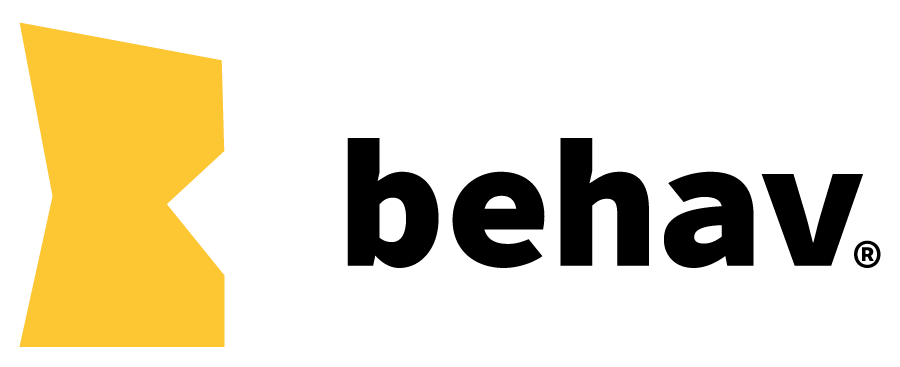Why connections matter in behaviour change.
Why connections matter in behaviour change: Revealing the foundations of our toolkit
Written by Lauren Alys Kelly
The Behav toolkit is more than just a collection of tools. It's a holistic approach to integrating behavioural science into your workflow. At its core, it’s built around a 'connected system' - a complex, yet seamless web of interconnected components designed to elevate your understanding of behaviour and ultimately, drive change.
Why it had to be a Connected System
In creating Behav, I aimed to build more than just a toolkit - I wanted to create an interconnected ecosystem of behavioural insights. Here's why I believe the connected nature of Behav is so essential:
Comprehensive View: When you look at behaviour through a connected system, you see a holistic picture. It helps us embrace the intricate complexity of human behaviours rather than trying to oversimplify it.
Adaptable and Versatile: One of the beauties of a connected system is its adaptability. Regardless of the context or user needs, the Behav toolkit has the flexibility to adapt and serve as a versatile companion in any project or initiative.
Precision in Intervention: As each component of Behav integrates behavioural science principles, we can design interventions that are not just effective, but precisely tailored to the behaviour at hand.
Interconnected Behaviour: Behavioural insights and behaviour are very much a story. They aren’t static insights or theories. Behavioural Science itself is generative. Theory grows theory. It was important to try and connect and represent the relationship between insights.
Informed Choices: The flow of insights from one component to the next allows us to make better, informed decisions. It's like having a well-marked map guiding you through the landscape of behavioural change.
Simplified Application: Whether you've been in the field of behavioural design or you're just dipping your toes in, Behav simplifies the process of integrating these principles into your work. Think of it as your personal guide, helping you navigate the rich tapestry of human behaviour.
Through Behav, my goal has been to distill the vast and intricate field of behavioural science into an accessible, usable form, drawing the connections that pave the way for effective and sustainable behaviour change.
The Complex Task of Building a Connected System
Building this connected system was no mean feat. It was like weaving an intricate tapestry - every thread considered and had to be placed just right. There were countless questions, reflections, and healthy debates that shaped its formation.
What influences this dynamic of a driver within both academic studies and practices?
How can we transform possibilities into structured, practical solutions?
How do we ensure usability without diluting the richness of behavioural science?
A critical challenge was to ensure that the complexity did not overshadow usability. The interconnectedness of the tools had to empower users, not confound them. Through meticulous planning, trial, and a healthy dose of patience, I managed to strike that delicate balance.
Exploring the Interconnections
Creating the interconnections within the Behav toolkit felt like assembling a puzzle - with one catch, there was no definitive end picture. The challenge was to make the progression from 'Drive Pattern' to 'Strategy' to 'Change Pattern' seamless, while maintaining a rich seam of behavioural insights.
Step 1: From Drive Pattern to Strategy
There are 9 Drivers and 24 Drive Patterns within the toolkit. To find connections I needed to go deeper, it’s the dynamics within each drive pattern. The overriding question was, "What influences this behavioural dynamic within both academic studies and practice?" This inquiry helped me map out a myriad of possibilities. The challenge? To bring structure to this scatter of threads. That's where 'Strategies' stepped in. Acting as nodes or linking pins, they helped me distill a curated set of options from the chaos. Each strategy, being a tried and tested approach to influencing people, created a clear path from broad driver possibilities to tangible change patterns. For the fans of divergent and convergent thinking, the relationship between Drive Patterns and Strategies are the same out and in. Exploration and curation.
Step 2: From Change Patterns to Strategy
This is was like running the flow in reverse - I followed the trail from 'Change Patterns' back to the 'Strategies'. The task at hand was to identify the solutions that consistently influenced behavioural change and map them back to their respective strategies. I used the same guiding questions as in step one. But this time I was pointing towards the solutions space. Unpacking and exploring the tools to design behaviour change.
Step 3: Proofing the Pathways
I scrutinised the work, a lot. If you know me then you know I disappeared into walls of threads and notebooks of edits for months. I asked myself:
"Does the science stand up?"
"Is the connection intuitive to users?"
"How do we balance the toolkit's adaptability to different behavioural contexts without overwhelming users with choices?"
Each question, each introspective moment, was a step towards building a system that was robust in its scientific foundation and welcoming in its user-friendliness.
With this process, I wasn’t just building connections, I was weaving together a tapestry of behavioural science that you can navigate with ease.
The journey to create Behav was both challenging and deeply rewarding. The connected system - a product of careful thought, intense critique, and countless hours of collaboration - is at the very heart of what makes Behav unique.
Experience the Behav toolkit, explore its interconnected components, and discover the power it can bring to your work.
As always, I welcome your thoughts, feedback, and insights.




